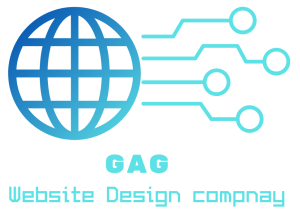In today’s digital landscape, Website Design for Insurance Agents the online presence of insurance agents plays a pivotal role in attracting and converting leads. A well-designed website serves as a powerful tool for generating leads and nurturing client relationships. This article delves into the essential elements of website design tailored specifically for insurance agents, highlighting strategies to maximize online lead generation. Whether you’re a seasoned agent or new to the field, mastering these principles can significantly enhance your digital footprint and drive business growth. Let’s explore how effective website design can transform your online presence and elevate your success in the competitive insurance industry.
Understanding the Importance of Website Design for Insurance Agents

In today’s digital era, a professional and well-designed website is more than just a digital storefront; it’s a critical component of your overall marketing strategy, especially for insurance agents. Here’s why:
- First Impressions Matter: Your website is often the first point of contact potential clients have with your business. A visually appealing and well-organized site can instantly instill trust and credibility, making visitors more likely to engage with your services.
- 24/7 Accessibility: Unlike traditional brick-and-mortar offices, your website is accessible round the clock, allowing clients to learn about your services, request quotes, or contact you at their convenience. This accessibility expands your reach beyond geographical limitations and accommodates clients’ busy schedules.
- Showcasing Expertise: A well-designed website provides a platform to showcase your expertise and industry knowledge. Through blog posts, informative articles, and case studies, you can demonstrate your understanding of insurance products, industry trends, and client needs, positioning yourself as a trusted advisor.
- Lead Generation Hub: Your website serves as a central hub for lead generation activities. By incorporating lead capture forms, quote request tools, and interactive features, you can capture visitor information and initiate the lead nurturing process effectively.
- Competitive Advantage: In a competitive market, a professionally designed website can set you apart from competitors who may have outdated or poorly optimized online presences. A sleek, modern website signals to potential clients that you’re committed to staying current and providing exceptional service.
- Data-Driven Insights: With the right tools in place, your website can provide valuable insights into visitor behavior, preferences, and demographics. By analyzing this data, you can refine your marketing strategies, tailor your offerings to meet client needs, and continuously improve the user experience.
Identifying Key Elements of Effective Website Design for Insurance Agents
To create a website that effectively engages visitors and converts leads, it’s essential to understand the key elements of effective website design for insurance agents. Here are the fundamental components to consider:
- Clear Branding and Messaging: Your website should reflect your brand identity and convey a clear message about who you are and what you offer. Use consistent branding elements such as logos, colors, and fonts to establish credibility and build brand recognition.
- Intuitive Navigation: A well-organized navigation structure is crucial for guiding visitors through your website seamlessly. Use logical categories and menu labels to help users find the information they’re looking for quickly. Consider implementing dropdown menus or a site map for easier navigation, especially if your website contains a lot of content.
- Responsive Design: With an increasing number of users accessing the internet via mobile devices, it’s essential to ensure that your website is optimized for all screen sizes. Responsive design techniques allow your site to adapt to different devices and provide a consistent user experience across desktops, laptops, tablets, and smartphones.
- Engaging Visuals: High-quality images, videos, and graphics can enhance the visual appeal of your website and capture visitors’ attention. Use relevant visuals to illustrate your products and services, humanize your brand, and evoke emotion. Avoid overcrowding your pages with excessive visuals, as this can overwhelm visitors and distract from your message.
- Compelling Content: Content is king when it comes to engaging visitors and establishing your authority in the insurance industry. Create informative, relevant, and engaging content that addresses the needs and concerns of your target audience. This can include blog posts, articles, case studies, FAQs, and client testimonials.
- Effective Calls to Action (CTAs): Clearly defined calls to action prompt visitors to take the next step, whether it’s requesting a quote, scheduling a consultation, or subscribing to your newsletter. Place CTAs strategically throughout your website, using persuasive language and contrasting colors to make them stand out.
- Trust-Building Elements: Building trust is essential for converting visitors into leads and clients. Incorporate trust signals such as client testimonials, industry certifications, awards, and affiliations to reassure visitors of your credibility and expertise.
- Optimized Loading Speed: Slow-loading websites can frustrate visitors and drive them away. Optimize your website’s loading speed by minimizing image file sizes, reducing unnecessary plugins, and utilizing caching techniques. Aim for a loading time of three seconds or less to ensure a smooth user experience.
Crafting Compelling Content for Lead Generation
In the digital landscape, content reigns supreme. Compelling content not only attracts visitors to your website but also engages them, nurtures relationships, and ultimately converts leads into clients. Here’s how insurance agents can craft content effectively for lead generation:
- Know Your Audience: Understanding your target audience is paramount to creating content that resonates with them. Research their demographics, preferences, pain points, and informational needs. Tailor your content to address their specific concerns and interests.
- Educational Resources: Insurance can be complex, and clients often seek guidance to navigate the intricacies of policies and coverage options. Provide educational resources such as blog posts, articles, guides, and FAQs to help clarify concepts, answer common questions, and empower clients to make informed decisions.
- Case Studies and Testimonials: Showcase real-life success stories through case studies and client testimonials. Highlighting how your services have positively impacted clients can build trust and credibility, reassuring potential leads of your ability to deliver results.
- Visual Content: Incorporate visually appealing elements such as infographics, videos, and interactive tools to enhance the user experience and convey information more effectively. Visual content is highly engaging and can help simplify complex insurance concepts.
- Interactive Tools: Offer interactive tools such as quote calculators, coverage estimators, or comparison charts to provide personalized insights and demonstrate the value of your services. These tools not only engage visitors but also capture valuable lead information.
- Call-to-Actions (CTAs): Strategically place CTAs throughout your content to prompt visitors to take desired actions, such as requesting a quote, scheduling a consultation, or subscribing to your newsletter. Make CTAs clear, compelling, and easy to find.
- Optimized Landing Pages: Create dedicated landing pages optimized for specific campaigns or services. Tailor the content and messaging to align with the campaign goals and audience intent, ensuring a cohesive and persuasive user journey.
- Consistency and Quality: Maintain consistency in your content voice, style, and branding across all channels. Ensure that your content is of high quality, accurate, and up-to-date to uphold your reputation as a trusted source of information.
- SEO Optimization: Incorporate relevant keywords, meta tags, and descriptive headings to optimize your content for search engines. This improves visibility and drives organic traffic to your website, increasing the chances of lead generation.
- Regular Updates and Refreshes: Keep your content fresh and relevant by regularly updating existing posts, adding new content, and addressing emerging topics or trends in the insurance industry. Fresh content demonstrates your commitment to staying current and provides returning visitors with valuable insights.
Utilizing User-Friendly Navigation for Enhanced User Experience

User experience (UX) is paramount in website design, particularly for insurance agents aiming to generate leads online. A user-friendly navigation system ensures that visitors can easily find the information they need and navigate through your website seamlessly. Here’s how to optimize navigation for enhanced user experience:
- Clear and Intuitive Menu Structure: Design a clear and intuitive menu structure that organizes your website’s content logically. Use descriptive labels and hierarchical menus to guide visitors to relevant sections, such as services, resources, about us, and contact.
- Simplified Navigation Paths: Minimize the number of clicks required for visitors to access essential information or complete desired actions. Streamline navigation paths to eliminate unnecessary steps and reduce friction in the user journey.
- Consistent Navigation Elements: Maintain consistency in navigation elements such as menu placement, style, and behavior across all pages of your website. Consistent navigation ensures that visitors can easily orient themselves and navigate confidently throughout the site.
- Mobile-Friendly Design: With the increasing prevalence of mobile browsing, ensure that your website’s navigation is optimized for mobile devices. Implement responsive design techniques to adapt navigation menus and elements for smaller screens, touch interactions, and varying orientations.
- Search Functionality: Incorporate a search bar prominently within your website to enable visitors to quickly locate specific information or resources. Implement autocomplete suggestions and filters to enhance search usability and accuracy.
- Breadcrumb Navigation: Use breadcrumb navigation to display the hierarchical structure of the website and indicate the visitor’s current location within the site. Breadcrumbs provide context and facilitate backward navigation, improving overall usability.
- Visual Cues and Feedback: Use visual cues such as hover effects, active states, and animations to provide feedback and indicate interactive elements within the navigation. Visual cues help users understand the functionality of navigation elements and encourage interaction.
- Accessible Design: Ensure that navigation elements are accessible to users of all abilities, including those using assistive technologies. Follow accessibility best practices such as providing descriptive alt text for images, keyboard navigation support, and ensuring sufficient color contrast.
- User Testing and Iteration: Conduct usability testing with real users to identify pain points, navigation challenges, and areas for improvement. Gather feedback through user surveys, heatmaps, and session recordings to iteratively refine and optimize navigation based on user preferences and behavior.
- Analytics and Insights: Utilize web analytics tools to track user navigation patterns, behavior flow, and engagement metrics. Analyze data to identify popular pathways, drop-off points, and areas of friction, allowing you to make data-driven decisions to enhance navigation and improve user experience over time.
Implementing Responsive Design for Mobile Accessibility
With the increasing prevalence of smartphones and tablets, ensuring that your website is accessible and functional across various devices is paramount. Implementing responsive design is crucial for providing a seamless user experience and maximizing engagement. Here’s how insurance agents can effectively implement responsive design for mobile accessibility:
- Understanding Responsive Design: Responsive design is a web development approach that ensures a website’s layout, content, and functionality adapt fluidly to different screen sizes and resolutions. This means that regardless of whether a visitor accesses your site from a desktop, laptop, tablet, or smartphone, they will have an optimal viewing and interaction experience.
- Mobile-Friendly Layouts: Design your website with mobile users in mind from the outset. Opt for clean, minimalist layouts that prioritize essential content and navigation elements. Use larger fonts, clear calls-to-action, and intuitive navigation menus to enhance usability on smaller screens.
- Flexible Grids and Media Queries: Utilize flexible grid layouts and media queries to dynamically adjust the size and positioning of page elements based on the device’s screen size. This ensures that content remains readable and visually appealing across a range of devices and orientations.
- Touch-Friendly Navigation: Replace traditional mouse-centric navigation with touch-friendly alternatives such as hamburger menus, expandable accordions, or tabbed interfaces. These navigation patterns are more intuitive for mobile users and improve usability on touchscreen devices.
- Optimized Images and Media: Optimize images and media files to minimize file sizes and load times without compromising quality. Use responsive image techniques such as srcset or picture elements to serve appropriately sized images based on the device’s screen resolution.
- Consistent Branding and Messaging: Maintain consistency in branding, messaging, and content across all devices to provide a cohesive user experience. Ensure that fonts, colors, logos, and branding elements are consistent regardless of the device used to access the site.
- Performance Optimization: Prioritize performance optimization to ensure fast loading times and smooth user interactions, particularly on mobile devices with slower internet connections. Minimize HTTP requests, leverage browser caching, and employ compression techniques to streamline content delivery.
- User Testing and Feedback: Conduct thorough user testing across a variety of devices and screen sizes to identify any usability issues or inconsistencies. Solicit feedback from real users to gain insights into their experiences and preferences, then iterate and refine your responsive design accordingly.
- Compliance with Accessibility Standards: Ensure that your responsive design adheres to accessibility standards and guidelines, making your website usable by individuals with disabilities. Consider factors such as screen reader compatibility, keyboard navigation, and color contrast ratios to enhance accessibility for all users.
- Continuous Monitoring and Updates: Regularly monitor your website’s performance and user interactions across different devices, and make ongoing improvements based on analytics data and user feedback. Responsive design is an ongoing process, and staying proactive ensures that your website remains accessible and user-friendly over time.
Integrating Calls to Action Strategically

Calls to Action (CTAs) are crucial elements of any effective website design, particularly for insurance agents aiming to generate leads and convert visitors into clients. Strategically integrating CTAs throughout your website can significantly impact user engagement and conversion rates. Here’s how to do it effectively:
- Clear and Compelling Messaging: Ensure that your CTAs convey clear and compelling messages that prompt visitors to take specific actions. Use concise language that communicates the value proposition and encourages immediate engagement, such as “Get a Free Quote,” “Schedule a Consultation,” or “Learn More.”
- Placement and Visibility: Position CTAs prominently on your website where they are easily visible and accessible to visitors. Consider placing CTAs above the fold on key landing pages, within blog posts and articles, and in prominent sections of your homepage to maximize visibility and engagement.
- Design and Formatting: Design CTAs to stand out visually from surrounding content, using contrasting colors, bold fonts, and eye-catching graphics to draw attention. Ensure that CTAs are visually consistent across your website to maintain a cohesive brand identity and user experience.
- Tailored to User Intent: Customize CTAs to align with the user’s intent and stage in the buyer’s journey. For example, use CTAs that focus on educational resources or information gathering for users in the awareness stage, while employing CTAs for quote requests or consultations for users in the consideration or decision stage.
- Personalization and Relevance: Leverage user data and browsing history to personalize CTAs based on individual preferences and interests. Tailor CTAs to specific audience segments or demographics to increase relevance and effectiveness, driving higher engagement and conversion rates.
- Multiple Touchpoints: Incorporate CTAs across multiple touchpoints throughout the user journey, including website pages, blog posts, email campaigns, social media posts, and digital ads. By providing multiple opportunities for engagement, you increase the likelihood of capturing leads at various stages of the sales funnel.
- A/B Testing and Optimization: Experiment with different variations of CTAs, including wording, design, placement, and color, through A/B testing. Analyze performance metrics such as click-through rates, conversion rates, and engagement levels to identify the most effective CTAs and optimize accordingly.
- Compelling Offer or Incentive: Enhance the effectiveness of CTAs by offering a compelling incentive or value proposition to encourage action. This could include special discounts, free consultations, downloadable resources, or access to exclusive content that incentivizes visitors to take the desired action.
- Urgency and Scarcity: Create a sense of urgency or scarcity in your CTAs to motivate immediate action. Incorporate phrases such as “Limited Time Offer,” “Act Now,” or “Only X Spots Left” to instill a sense of FOMO (fear of missing out) and prompt visitors to take action before it’s too late.
- Tracking and Analysis: Implement tracking mechanisms such as UTM parameters or conversion tracking pixels to monitor the performance of your CTAs and measure their impact on lead generation and conversion goals. Use data-driven insights to refine your CTA strategy and optimize for maximum effectiveness over time.
Website Design for Insurance Agents Conclusion
In conclusion, effective website design is essential for insurance agents seeking to generate leads and grow their online presence.
By understanding the importance of website design, crafting compelling content, implementing responsive design for mobile accessibility, and strategically integrating calls to action, agents can create a user-centric digital experience that engages visitors and converts them into clients.
As technology and consumer behaviors continue to evolve, staying adaptable and responsive to emerging trends will be key to maintaining a competitive edge in the digital landscape.
By leveraging these strategies and continuously refining their approach, insurance agents can unlock the full potential of their online presence and drive sustained business growth in the dynamic and competitive insurance industry.
Frequently Asked Questions (FAQs) about Website Design for Insurance Agents :
- Why is website design important for insurance agents?
- Website design is crucial for insurance agents as it serves as their digital storefront, making a lasting impression on potential clients. A well-designed website enhances credibility, facilitates lead generation, and showcases expertise.
- What elements should be included in effective Website Design for Insurance Agents ?
- Effective website design for insurance agents should include clear navigation, compelling content, responsive design for mobile accessibility, strategic calls to action, trust-building elements, and SEO optimization.
- How can insurance agents craft compelling content for lead generation?
- Insurance agents can craft compelling content by understanding their audience, providing educational resources, showcasing case studies and testimonials, utilizing visual content, offering interactive tools, and optimizing for search engines.
- What is responsive design, and why is it important for insurance agents?
- Responsive design is a web development approach that ensures websites adapt fluidly to different devices and screen sizes. It’s crucial for insurance agents as it enhances user experience, improves accessibility, and maximizes engagement across various devices.
- How can insurance agents strategically integrate calls to action (CTAs) into their website design?
- Insurance agents can strategically integrate CTAs by using clear and compelling messaging, placing them prominently on their website, customizing them to align with user intent, offering incentives, and continuously optimizing based on performance metrics.
- What are some common challenges insurance agents face in website design, and how can they overcome them?
- Common challenges in website design for insurance agents include balancing compliance requirements, optimizing for mobile responsiveness, and standing out in a competitive market. Agents can overcome these challenges by staying informed, prioritizing user experience, and seeking professional assistance when needed.
- How can insurance agents measure the effectiveness of their website design efforts?
- Insurance agents can measure the effectiveness of their website design efforts by tracking metrics such as traffic, engagement, conversion rates, and lead generation. Utilizing analytics tools and conducting regular assessments will provide insights into areas for improvement.
- Is it necessary for insurance agents to continuously update their website design?
- Yes, it’s essential for insurance agents to continuously update their website design to stay current with technological advancements, evolving consumer preferences, and industry trends. Regular updates ensure that the website remains relevant, user-friendly, and competitive in the digital landscape.



